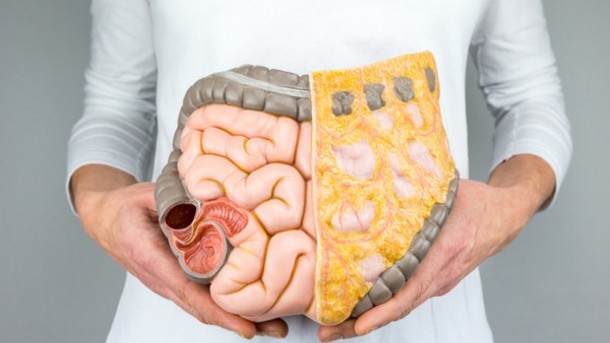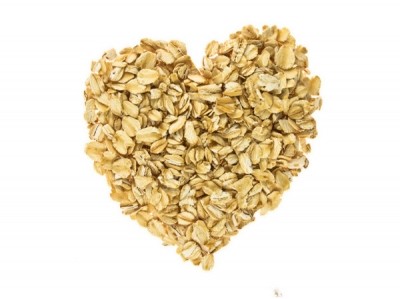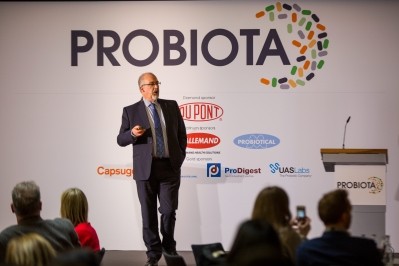Chitin-glucan has prebiotic potential to cut cholesterol, finds KitoZyme trial

The current study, published in the Journal of Functional Foods and funded by KitoZyme, investigated how chitin-glucan (CG) – an patented insoluble dietary fibre derived from fungi – interacts with the human digestive system.
The ingredient, marketed as KiOTransine by KitoZyme, had previously been found to lower LDL cholesterol levels in a six-week RCT with 130 human subjects, while previous animal studies have linked the ingredient with lower triglyceride levels in the blood and reductions in the negative effects of a high-fat diet.
François Luthers, sales and marketing director at KitoZyme, said the new study is an important milestone for CG, as it clarified the mechanism by which the fibre worked.
“We didn’t know it was a prebiotic actually, that it had this effect on microbiota,” he commented.
“We already knew some benefits on cardiovascular health, on digestive health, on the symptoms of a bad diet digestion – but it was important to understand a little bit more what exactly was the mechanism of the fibre.”
Prebiotic potential
The researchers used the Simulator of the Human Intestinal Microbial Ecosystem (SHIME) model to observe CG’s effects throughout the gastrointestinal tract, using doses of 1.5g and 4.5g of CG.
In the upper gastrointestinal tract (GIT), CG’s main effects were to reduce bioaccessible iron levels as well as bile salts, and to show strong water absorption, the authors said.
“The positive effect of CG on LDL observed in [a previous study] may be explained by the capacity of CG to bind bile acids and sequester them from the enterohepatic circulation,” they wrote – noting that reducing bile salts in the GIT causes the liver to use LDL in the blood to produce more bile acids.
Meanwhile, in the large intestine, CG becomes a carbon source for microbiota, the team said.
“CG was slowly fermented along the whole colon as shown by the increased distal colonic acidification, positive net [short-chain fatty acid] production and low gas production,” the authors wrote.
The smaller CG dose mostly led to an increase in propionate only, while the larger dose saw production of butyrate and propionate increase.
“Butyrate acts as main energy source for the gut epithelium and has proven protective effects against inflammation and colon cancer. Finally, propionate has similar local activity in the gut as compared to butyrate, yet it is also transported to the liver where it was shown to have positive cholesterol-lowering effects and effects on glycemic control,” wrote the authors.
The higher CG dose also led to an increase in the total concentration of bacteria in the simulated distal colon, but did not result in a meaningful increase in bifidobacteria or lactobacilli. But the researchers noted a longer period of dosing may be needed to produce changes in these two groups.
Commercial plans
According to Luthers, in Europe KitoZyme is working to create finished products around CG, which it hopes to licence to big brands. Currently CG is approved as a novel food in the EU, and KitoZyme is aiming to obtain approval for its use in medical devices and as a food supplement.
In the US, where CG has Generally Recognised as Safe (GRAS) status, KitoZyme is selling the fibre as an ingredient to firms for use in their own products.
Luthers said the next step in terms of research around CG would be placebo-controlled RCTs to gather more data on CG’s effects on gastrointestinal diseases, in order to strengthen KitoZyme’s dossier for obtaining medical device status.
“We are doing the full job in Europe, trying to go the extra mile for our customers, trying to imagine interesting products with powerful claims, clinical data to support them, and a clear regulatory status for them to sell, at the end of this year or the beginning of next year,” he said.
“We are also doing some early-stage research on other fields, related to Crohn’s disease, for example. But there we are a little bit less advanced – we are more in vitro and pre-clinical stages,” added Luthers.
Source: Journal of Functional Foods
Published online ahead of print, doi: 10.1016/j.jff.2017.01.030
“Fate of chitin-glucan in the human gastrointestinal tract as studied in a dynamic gut simulator (SHIME®)”
Authors: Marzorati, M.; Maquet, V.; Possemiers, S.








